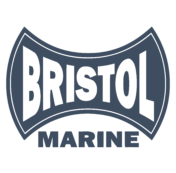"Spineless: The Magical World of Marine Invertebrates"
presented by Dr. James T. Carlton and Krystal Rose
July 23, 2024
Spineless: The Magical World of Marine Invertebrates
When:
July 23, 2024
In-Person Reception begins at 6pm. Lecture begins at 7pm, Eastern.
Tickets:
Virtual Tickets: Members: $10, Non-Members: $15 In-Person Tickets: Members: $15, Non-Members: $20 Full Series Pass: $125
Purchase Tickets: Click Here
Season Pass: $125
Venue:
Hall of Boats, Ground Floor, One Burnside St
Join Dr. James T. Carlton and Krystal Rose to learn about one of the latest exhibitions at Mystic Seaport Museum, Spineless: A Glass Menagerie of Blaschka Marine Invertebrates. The exhibit explores some of the inspiring ways that people have tried to record the ocean’s mesmerizing marine invertebrates, an abundant, diverse, and ubiquitous group of sea creatures including sponges, jellyfish, sea anemones, crustaceans, mollusks (such as sea slugs and octopuses), sea squirts, and many more. Learn More at MysticSeaport.org
They will speak about the major themes of the exhibition, including glassmakers Leopold and Rudolf Blaschka of Dresden, Germany, who produced glass models of spineless sea creatures with meticulously accurate forms, anatomical details, and colors; sailors’ drawings and descriptions of marine invertebrates found in logbooks and journals; the preservation of marine invertebrates as “wet specimens,” and contemporary, invertebrate-inspired art.
Dr. Carlton will also share information about some of the species the Blaschkas created in glass, that live today in our local waters, and some that have since become introduced species around the world, including in Connecticut and Rhode Island.
Dr. James T. Carlton and Krystal Rose are the co-curators of the exhibit Spineless: A Glass Menagerie of Blaschka Marine Invertebrates, now on view at Mystic Seaport Museum. Photo Credit: Museum of Comparative Zoology, Harvard University, MCZ:SC:310 Scyllaea marmorata. © President and Fellows of Harvard College. Photograph by Joe Michael.
Dr. Carlton is Professor of Marine Sciences Emeritus at Williams College (Williamstown, Massachusetts) and Director Emeritus (1989-2015) of the Williams College-Mystic Seaport Coastal and Ocean Studies Program (Mystic, Connecticut).
His research focuses on the environmental history of coastal marine ecosystems, including invasions of non-native species and modern-day extinctions in the world’s oceans. His research sites include the Pacific and Atlantic coasts of North America, the Hawaiian Islands, and the Galapagos Islands.
Carlton is Founding Editor-in-Chief of the journal Biological Invasions, a Pew Fellow for Marine Conservation, a Fellow of the American Association for the Advancement of Science and a Fellow of the California Academy of Sciences. He has been a Distinguished Research Fellow of the University of California at Davis’s Bodega Marine Laboratory and the Paul Illg Distinguished Lecturer at the University of Washington’s Friday Harbor Laboratories.
Carlton is the only scientist to receive the Interagency Recognition Award from the United States Federal Government for his national and international work to reduce the impacts of exotic species invasions in the sea. He was Co-Chair of the Marine Biodiversity Committee of the National Academy of Sciences, which produced Understanding Marine Biodiversity: A Research Agenda for the Nation, and he was Co-Chair of the National Academy of Sciences/National Research Council committee advising on setting standards for ballast water to reduce invasive species introductions. Carlton wrote and edited a monograph on the marine life of the Pacific Coast (Intertidal invertebrates from Central California to Oregon, University of California Press, 2007, 1001 pp.).
In 2007, the James T. Carlton Marine Science Center, an 8000-square foot research and teaching facility of the Williams-Mystic Program, was dedicated in his honor. In 2013, he received the Fellows Medal of the California Academy of Sciences. He has authored or co-authored more than 200 peer-reviewed publications and co-edited/authored 6 books. In fall 2017, a team of researchers led by Carlton published a major article on the transport of invasive marine species aboard marine debris in the wake of the May 2011 Japanese tsunami. The article, which appeared on the cover of Science, drew together a team of researchers from across the country and received national media attention.
Krystal Rose has a history and historic preservation background and has worked at cultural sites in Connecticut, Georgia, and the Carolinas. She has been at Mystic Seaport Museum for seventeen years and is currently the Curator of Collections. Before becoming Curator, she spent about a decade working as a liaison between the Education and Curatorial departments, directing the creation of the Mystic Seaport for Educators website. She also facilitated teacher professional development programs centered on the Museum collections, and contributed to the book Bringing Teachers to the History Museum: A Guide to Facilitating Teacher Professional Development (2022).
Krystal has a passion for sharing collections and sea stories in new ways and a particular interest in the intersections of maritime history and marine science. Since becoming Curator of Collections, Krystal has contributed to the exhibitions Story Boats, Fish and Forrest, Alexis Rockman: Oceanus, and most recently Spineless.
Speakers Portrait: Mystic Seaport Museum, photograph by Joe Michael.
2025 Season Pass
From Arctic voyages to Gilded Age yachts and more! Don't miss a moment of this year's Lecture Series and save both time and money with a Full Series Pass.










